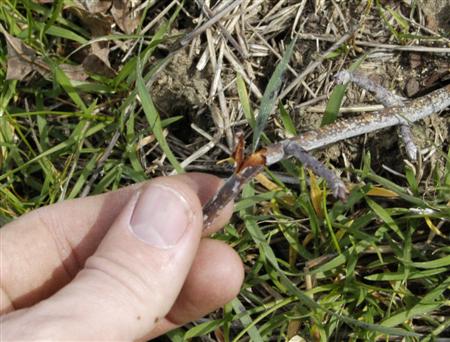Currently we are working on a personal project to upgrade vegetation for stream corridors and create hedgerows for wildlife on a site in the Sacramento Valley. The installation consisted of Cottonwood, Buckeye, and Black Walnut trees, with Toyon and Creeping Rye grass planted as well. Taking a look at the site again recently after the cold winter weather, most of the plants are doing quite well. Retention on plantings of this type is typically pretty poor- most of the plants are not irrigated, and they are being planted from liner containers (just sprouted from cuttings).
While it is nice to see that the plantings have done well, with a 80-90% retention rate, the real test will be when the summer comes and the plants are exposed to 100+ degree temperatures without water. Fortunately, the plants were all chosen because they are native to the area and have adapted to such extremes of heat and cold. All the deciduous trees fared better than the Toyon, which was quite small and in some cases was frozen back in areas where it had less protection.

A California Buckeye (Aesculus californica) just leafing out

A dead Buckeye with Brown stem

A live Buckeye with green layer under bark. The scratch test is a simple way to test the condition of most plants.
